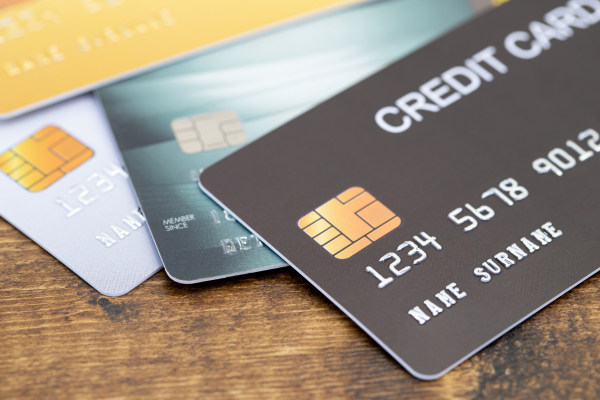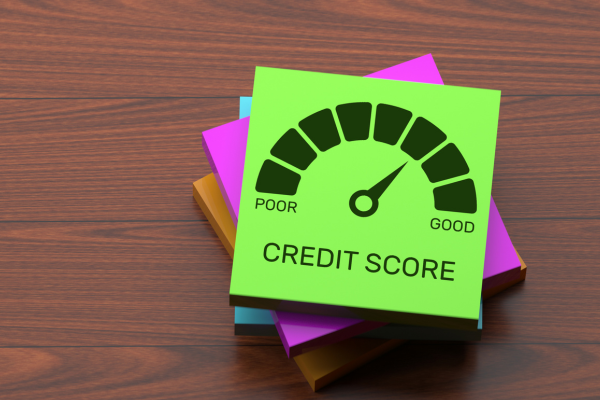When Levi King opened his electric sign installation and repair business as a 20-something entrepreneur, he assumed that a reputation for fast, affordable, high-quality work was the secret to success. Though that was mostly true, he soon learned that less obvious factors–like the strength of his business credit–would play an equally vital role in growing his business.
If your goal for 2025 is growth, sales and marketing shouldn’t be your sole focus. Here are four ways to level up your sign business financially to support that growth.
Build (and Check) Your Business Credit
For King, losing a bid on an important project led him to the discovery that his business credit reports contained information that was hurting his business reputation. For many businesses, bad business credit isn’t the problem; it’s a lack of business credit that makes doing business with them appear more risky.
Here’s why building business credit matters for your business:
- Supplier relationships: Many industry suppliers offer better payment terms (net-10 or net-30, or even net-60 terms) to companies with established business credit. Supplier credit can significantly improve cash flow and most suppliers check business credit before extending terms. A lack of business credit will often lead to shorter payment terms and/or access to less credit.
- Win larger contracts: When bidding on big projects, strong business credit can give you an edge as it demonstrates financial stability and capability. Potential customers can check business credit and a lack of payment history or a history of slow payments can cost you business, as King discovered.
- Equipment financing: With strong business credit, your business may qualify for better rates when financing expensive equipment like a wide-format printer, CNC router or vehicle wrapping tools.

To start building business credit:
- Properly structure your business (LLC or corporation) and obtain an EIN.
- Get tradelines that report to business credit bureaus. Check with your suppliers or use the net-30 list at Nav.com to get started.
- Pay all bills consistently and on time. Paying just a few days late can impact your business credit scores.
- Monitor your business credit reports regularly through major commercial credit bureaus.
King managed to straighten out his business credit, and moved on to start other businesses, but the “School of Hard Knocks” lessons he learned in his sign business stayed with him. They eventually led him to co-found Nav, a business financial health platform where business owners can check, manage and monitor their business credit.
Centralize Your Business Banking
You already know that mixing business and personal accounts is not a good idea. If you’re paying personal expenses from a business account, for example, you could jeopardize the personal asset protection benefits that your LLC or corporation offers.
If you’re using a business bank account, ensure it captures the full picture of how your business is doing financially. It’s not uncommon for businesses to get paid in a variety of ways, including credit cards, checks, ACH—perhaps even PayPal, Venmo or Zelle.
If you accept a payment via PayPal, for example, consider transferring those funds into your business bank account before you spend or save, rather than using it as a separate bank account. (Always keep in mind any deposit insurance limits that may apply, however.)
Centralizing your banking this way can be helpful in several ways:
- Project cost tracking: The more complex your installations, the more you need clear visibility into project costs and profitability.
- Cash flow management: The sign industry’s project-based nature means irregular revenue cycles. Depending on your location and the clients you serve, your bank account balance can fluctuate a lot throughout the year. Having a clear view of your cash flow helps you make better financial decisions.
- Qualifying for financing: When you apply for small business financing, you will likely need to document your revenue with business bank statements, or by connecting your bank account to the lender’s application portal.
Some business bank accounts offer sub accounts to set aside money for taxes or other tracking purposes if needed.

Leverage Business Credit Cards
The Federal Reserve reports in the Small Business Credit Survey (SCBS Employer Firms 2024) that just over half (56%) of small business owners report using credit cards.
For sign companies specifically, business credit cards offer several advantages:
- Project float: The float refers to the time between when you make a purchase and when payment is due. Depending on how you time your purchases, you may get a few days or a few weeks before your payment is due. If your card offers a grace period and you pay your statement balance in full, you can often avoid interest charges.
- Payment flexibility: If a client pays slowly, the option to make smaller payments on your credit card can be very helpful. Interest rates can be high, though, so pay attention to APRs and pay off balances as soon as possible.
- Fraud protection: Credit cards carry strong fraud protection. Under federal law, cardholders are generally only responsible for the first $50 in fraudulent purchases. Plus, you can typically dispute purchases when the goods or services you purchased aren’t delivered as agreed. Just keep in mind that if you authorize an employee to use your credit card, your business is likely responsible for any purchases they make. Spending controls can help protect your business from abuse.
- Travel benefits: For shops doing installations across multiple locations, travel rewards cards can significantly reduce those costs through miles, hotel points and/or car rental car coverage.
Choose and use the right cards
Here’s how to think about maximizing the use of business credit cards. Different cards can serve different purposes. For example, you could consider using a:
- Cash back card for regular expenses (materials, supplies)
- Travel rewards card for site or sales visits
- 0% intro APR business credit card to finance larger purchases over several months. Pay the balance off before the introductory rate expires and you may get up to a year (or longer) of interest-free financing.
To maximize credit card benefits, consider timing large purchases to make the most of welcome bonuses (also called “sign up bonuses”), and track which cards offer bonus cash back or points for purchases in specific categories such as fuel purchases, or office supplies.
An added benefit of business credit cards is that many issuers report payment history to business credit bureaus. Paying on time can help your business build a positive business credit history.
Remember, though, business credit cards are usually best used as a tool for convenience and rewards, not long-term financing. While 0% intro periods can help with major purchases, develop a clear payoff plan before the promotional period ends and avoid carrying balances at high interest rates.

Line Up a Line of Credit
Whether it’s a cash flow crunch, or an opportunity—like a piece of equipment available at a deep discount if you can grab it quickly—access to credit means you can move forward rather than waste time scrambling for capital.
A line of credit is one of the most flexible types of financing. Once you’re approved, you can use it as needed, and only pay interest on the amount you use.
Lines of credit often feature a draw period where you can borrow as needed, and a repayment period where any remaining balance must be paid off over a specified period of time. During the draw period, your business may be able to make interest-only payments. Be careful that doesn’t lead your business to run up balances you’ll have trouble paying back in the future.
Whether you apply for a line of credit through a bank (harder to qualify, but terms are often competitive) or through an online lender (faster approval, but rates can vary significantly), you’ll want to apply when your finances are as strong as possible.
Most issuers will require proof of revenue in the form of bank statements and/or financial statementsand good credit is often required.
Building Financial Health in 2025
These four financial strategies – building business credit, organizing your banking, leveraging credit cards and securing a line of credit – can work together to help create a strong financial foundation for your sign business. Each can reinforce the others: good business credit may help your business qualify for better financing, centralized banking makes it easier to document cash flow and financial capability and having multiple types of credit offers flexibility to tackle opportunities when they arise.
The sign industry continues to evolve, with technology advances in EMCs, digital displays and custom fabrication creating both opportunities and challenges. By implementing these financial strategies now, you’ll be better positioned to take advantage of growth opportunities while protecting your business against uncertainties in 2025 and beyond.
About the Author:

Gerri Detweiler has several decades of experience guiding individuals through the confusing world of credit and has earned a reputation as a reliable and independent source on personal and small business credit. Today, Gerri serves as Education Consultant for Nav, a financial health platform for small businesses owners to build and manage their business and personal credit, track cash flow patterns and understand their financing options before they apply.










